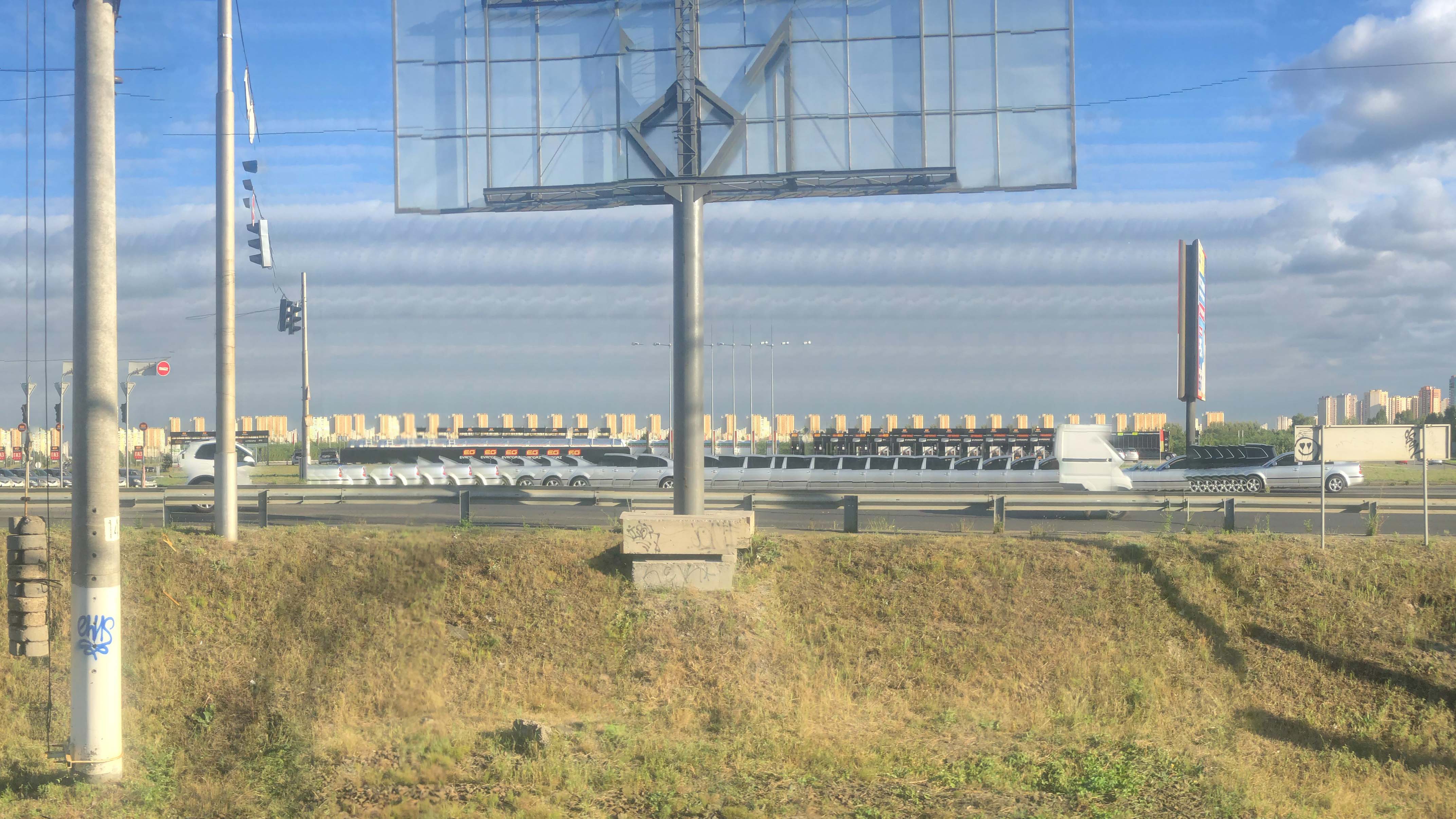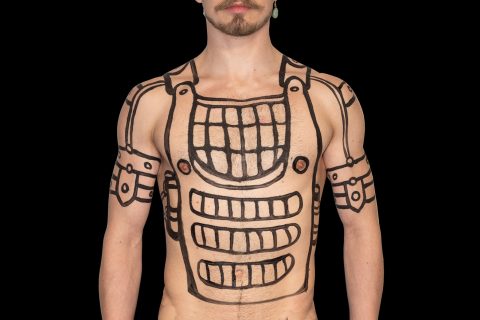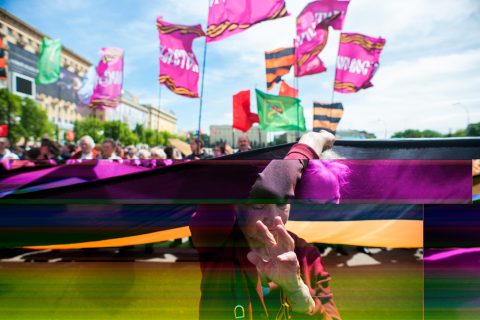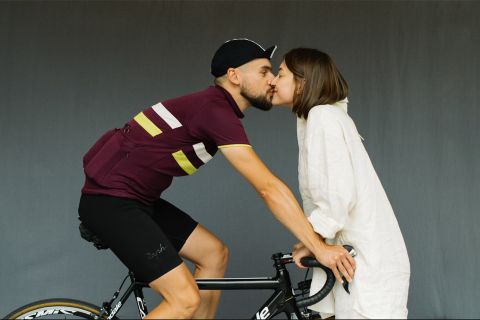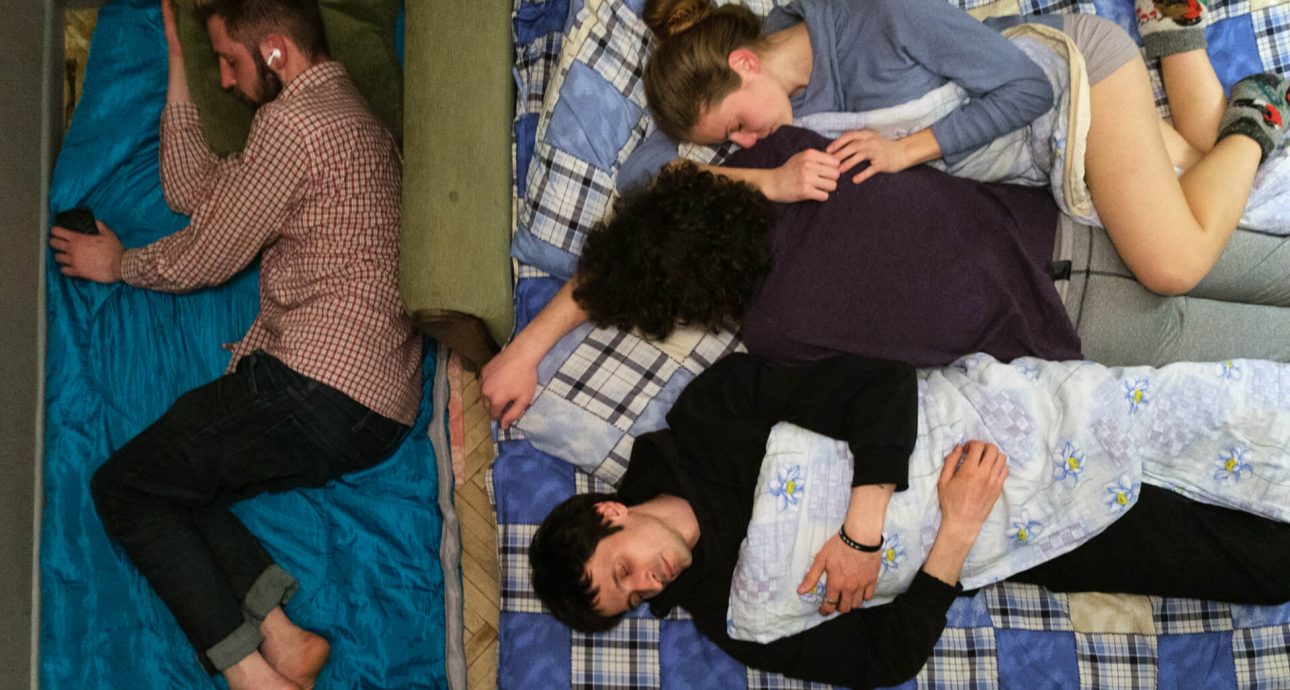
We be of one blood

Photographer from Kharkiv. He started his career as a photojournalist, his photos were featured in Forbes, National Geographic, The Guardian, Le Monde, and Wirtschafts Wochesince. In his artistic practice, he explores the borders between public and private spaces, computer algorithms and their impact on photography. His works were exhibited in Galerie Claude Samuel (Paris), Ukrainian Museum (New York), Ukrainian Cultural Centre (Los Angeles), EEP Berlin, La Quatrieme Image (Paris), Odesa// Batumi, Hybrid Festival (Madrid), and at other festivals and galleries.
— About ten years ago I worked on a project called Daily Lives, documenting how people co-exist in shared spaces. I lived with friends, with girls, and took pictures of their daily lives. At that time, I was interested in the notions of personal space, homelife, sexuality, and borders between people. I took the majority of photos in Kharkiv, but some were taken during my travels with friends.
When the full-scale invasion started, I left my home and went to Lviv. I lived in a house with other displaced people for the first couple of days. That’s when I got back to documenting people’s shared living, but the context changed dramatically. I switched flats and kept taking pictures of my temporary homes and other apartments, shelters, and houses for displaced people. I felt closely connected to the people in the photos — we had the same experience of leaving our homes and moving into temporary spaces in other cities. For one thing, this is a very personal story, but it is also a typical story about many people, who are forced to start over in life.
I felt closely connected to the people in the photos — we had the same experience of leaving our homes and moving into temporary spaces in other cities.
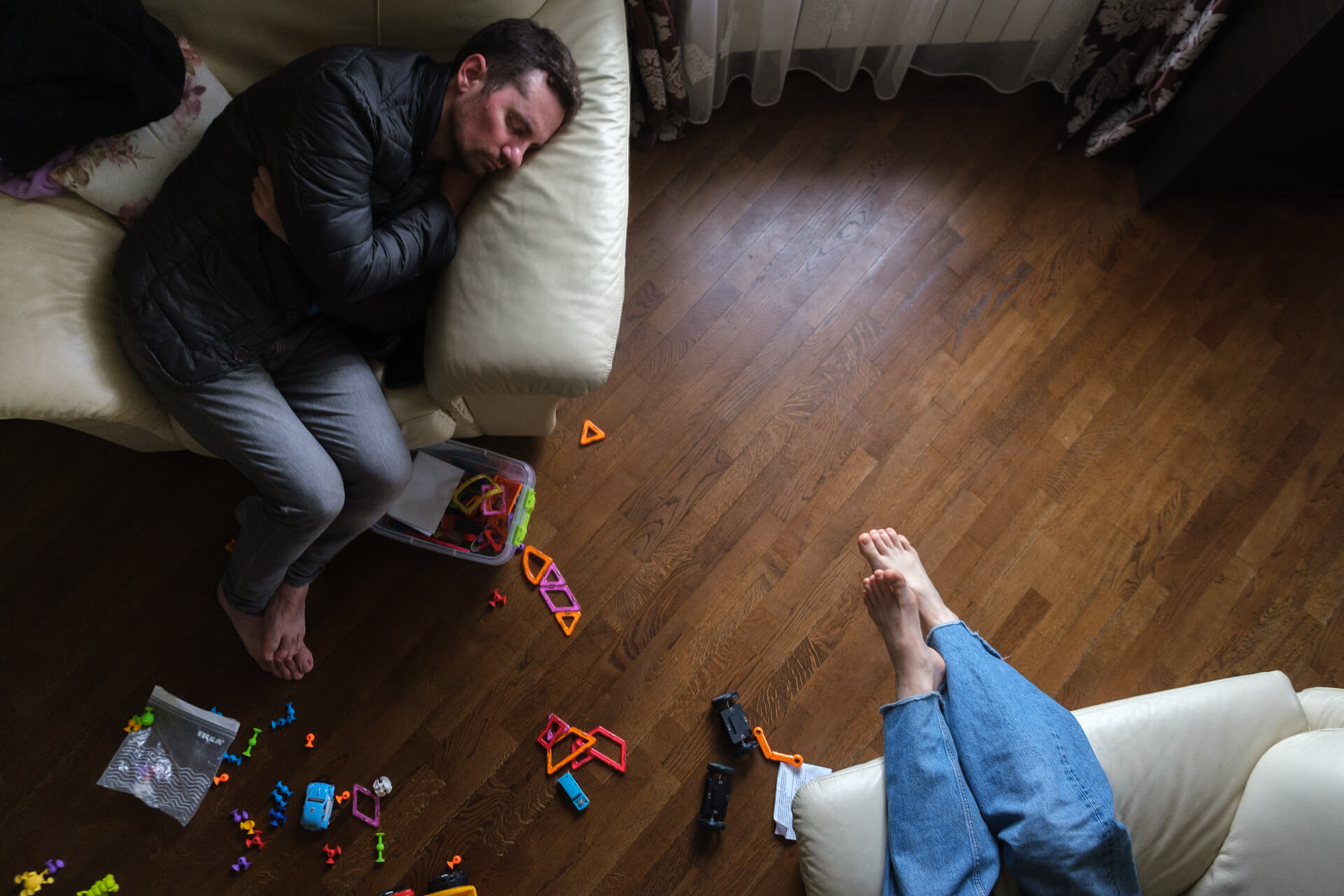
Oleh sleeps after spending restless nights in destroyed Kharkiv and going a long way to a safe place near Lviv. He now lives in a house with other displaced people. In March, around thirty residents stayed in a five-room apartment.
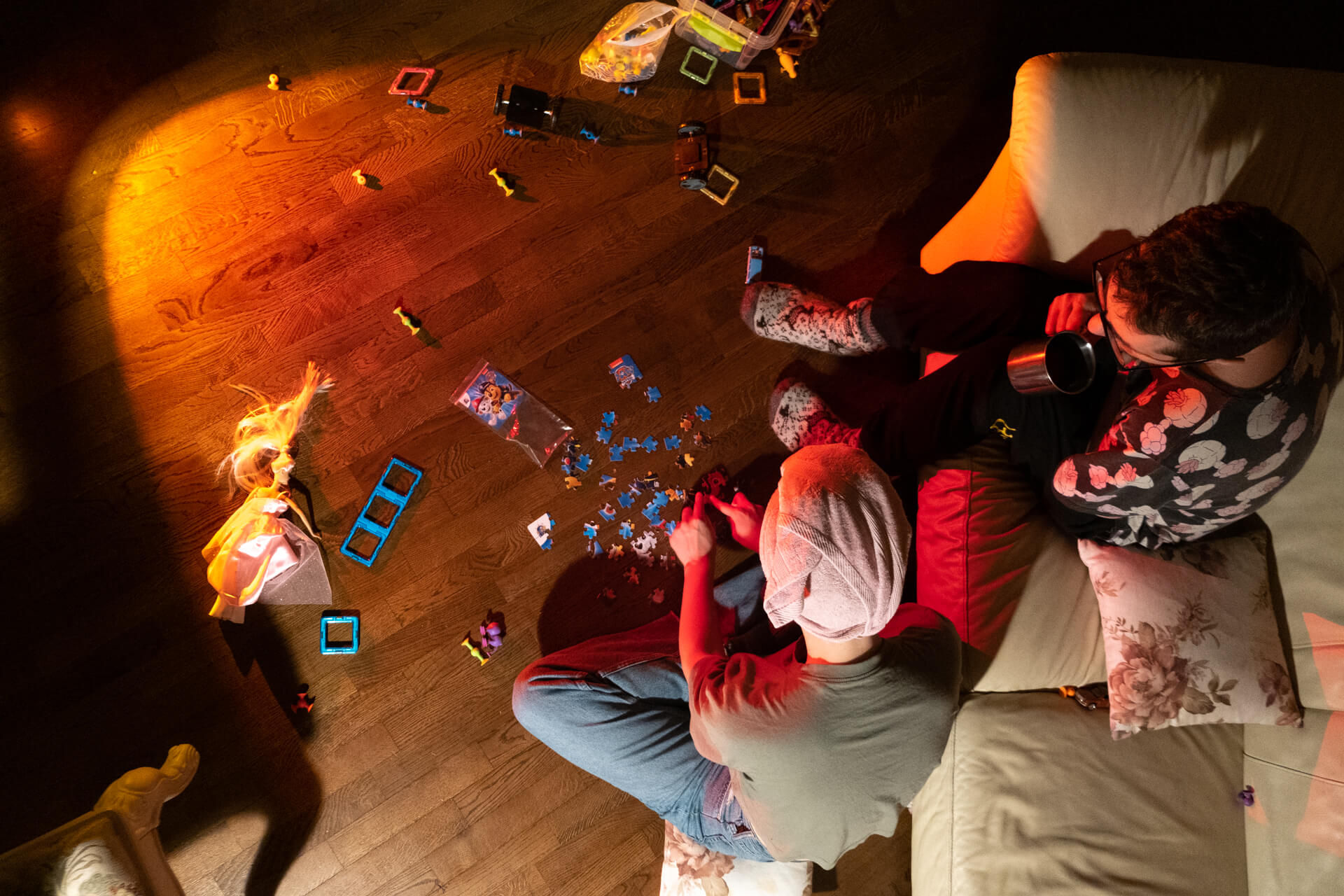
Olena and Oleh solve a puzzle on the first evening after their arrival to Western Ukraine. “It distracts me from what I lived through”, says Olena. She spent six days in Kharkiv under shelling.
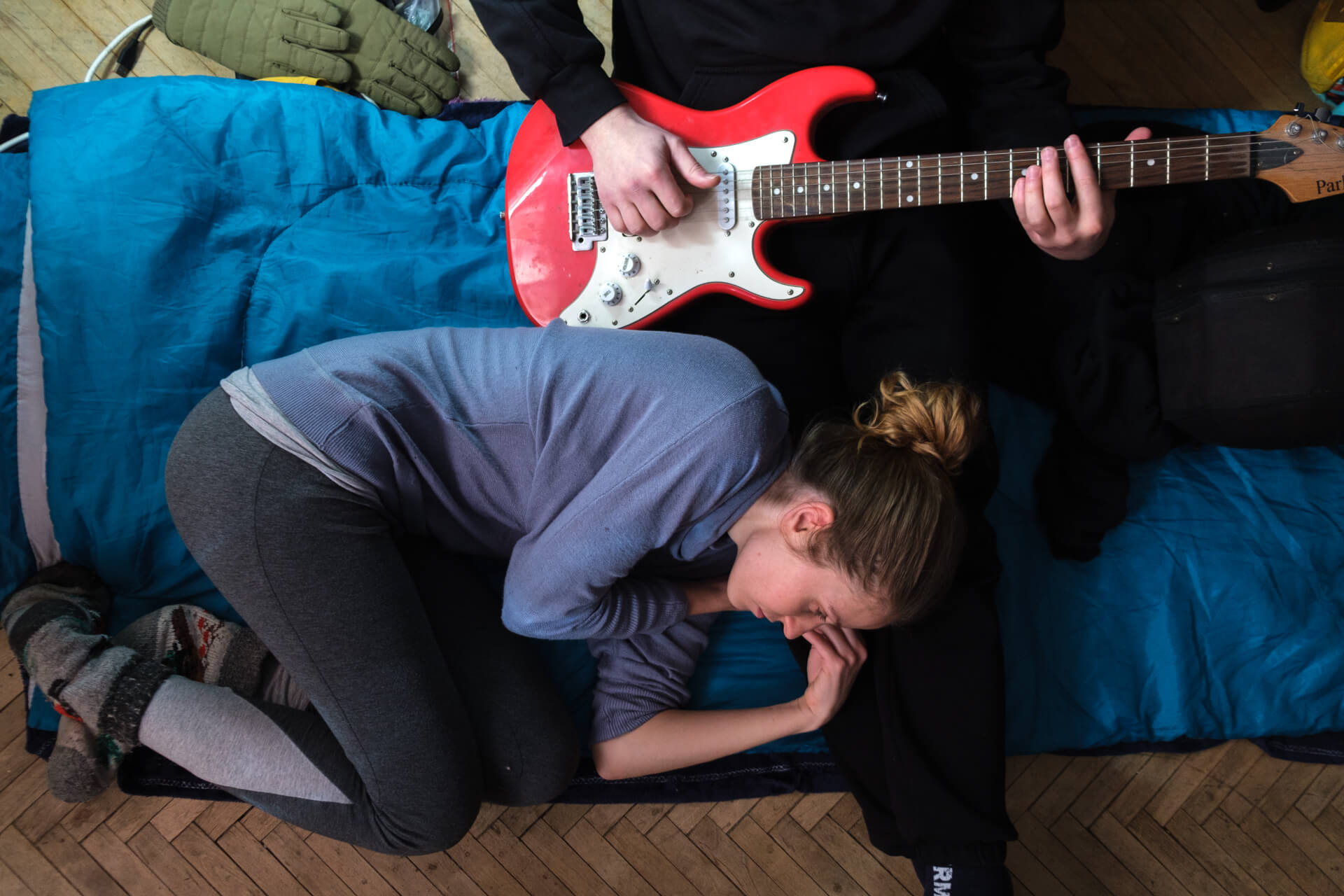
Mariia and Hlib are from Kharkiv. They now live in a small room in Lviv with two other displaced people.
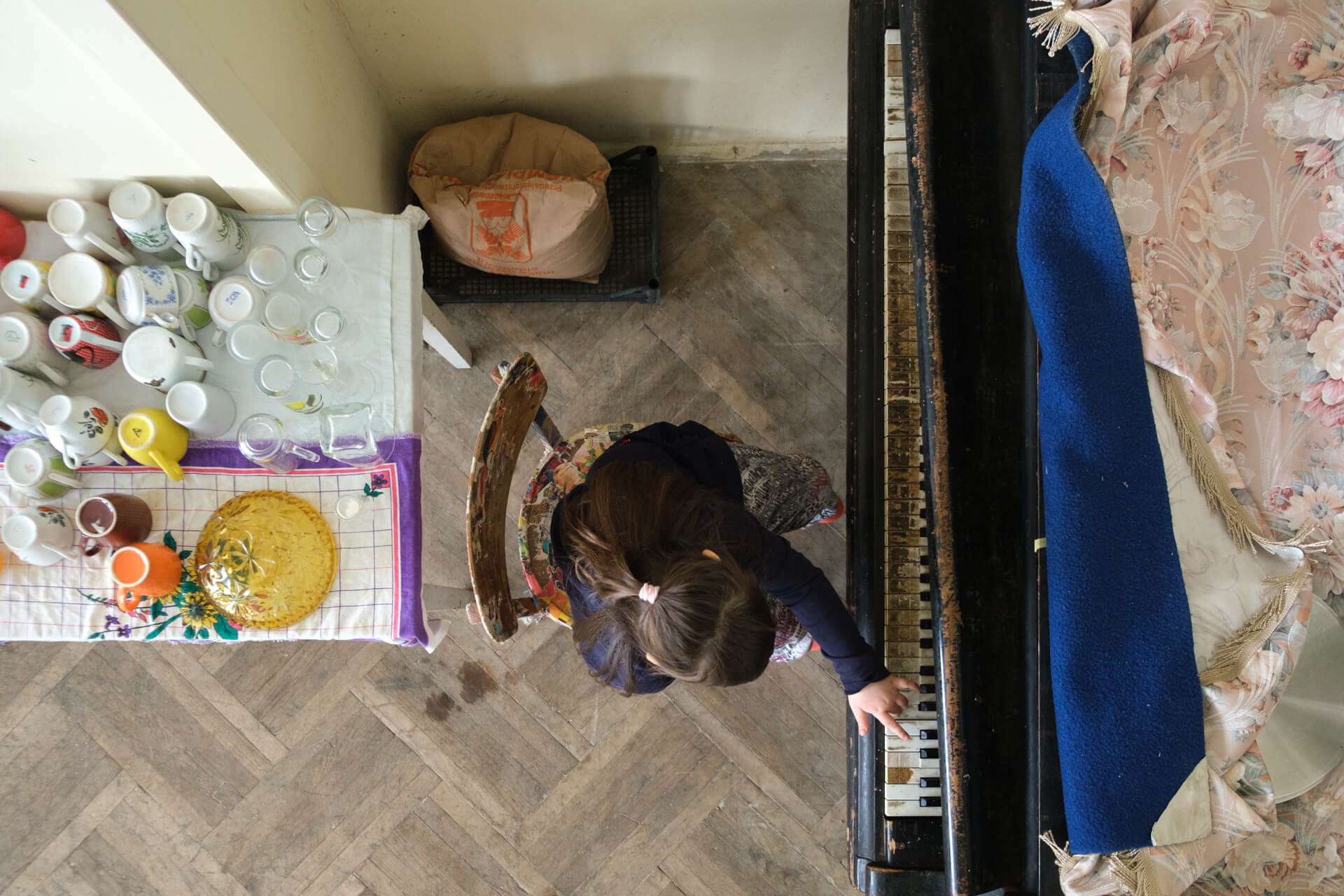
Uliana, 6 years old. She came from Slov’yansk together with her mother and brother. They live in a hostel for displaced people from Eastern Ukraine, which is constantly shelled.
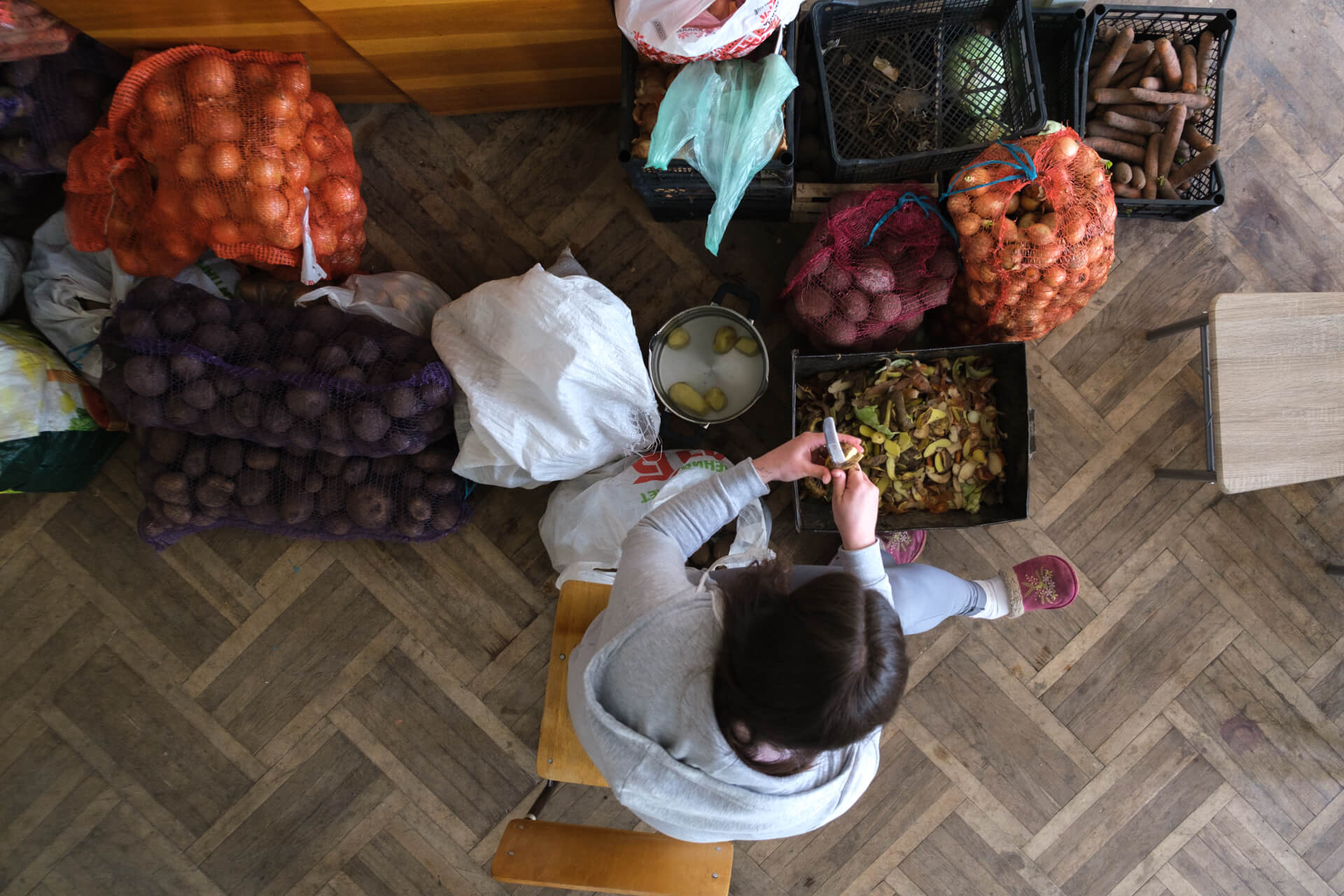
Tania helps to cook dinner in the hostel, where she lives.
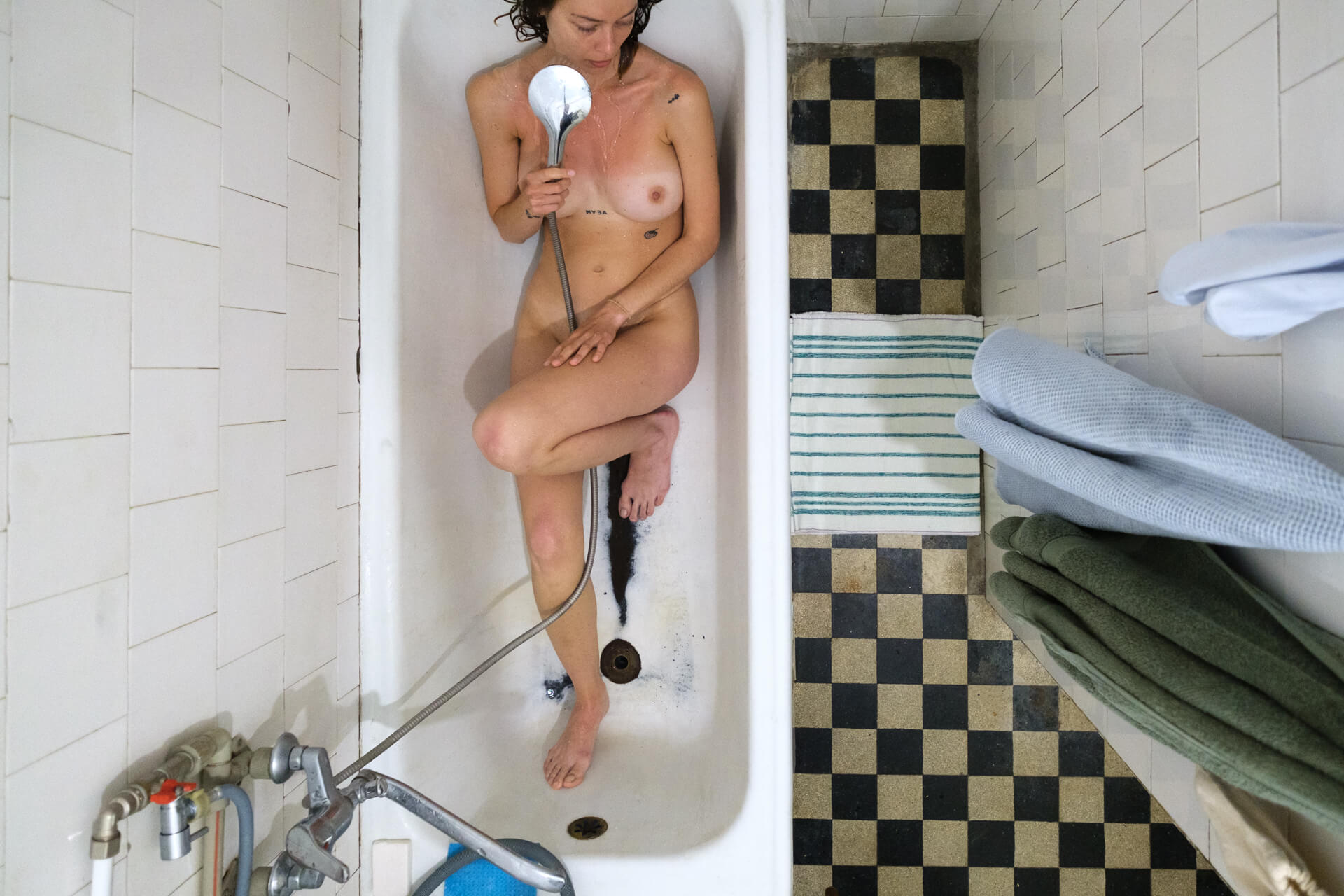
Anna takes a bath in the apartment, to which she just moved with her boyfriend and brother.
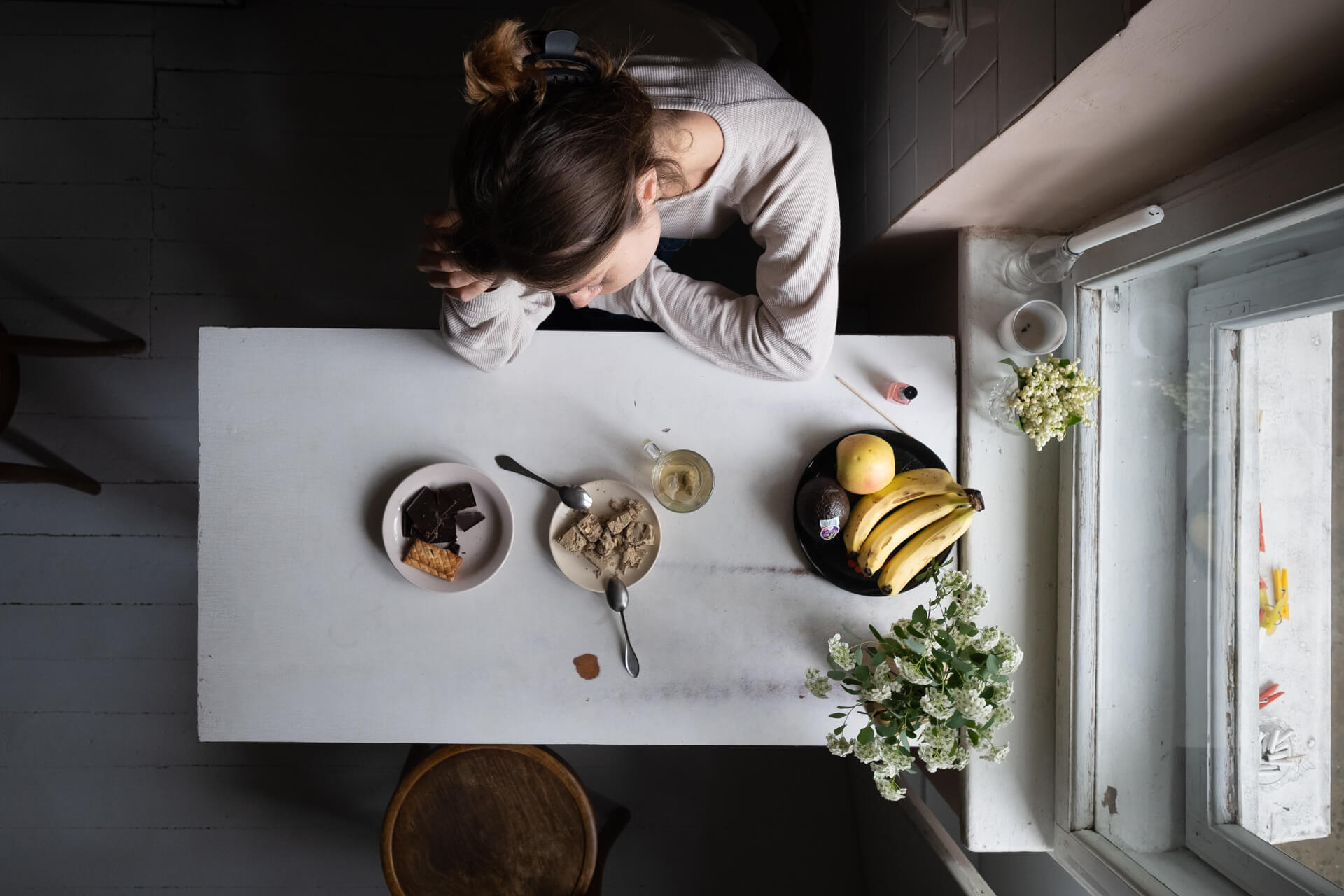
Anna sitting in the apartment, to which she just moved with her boyfriend and brother.
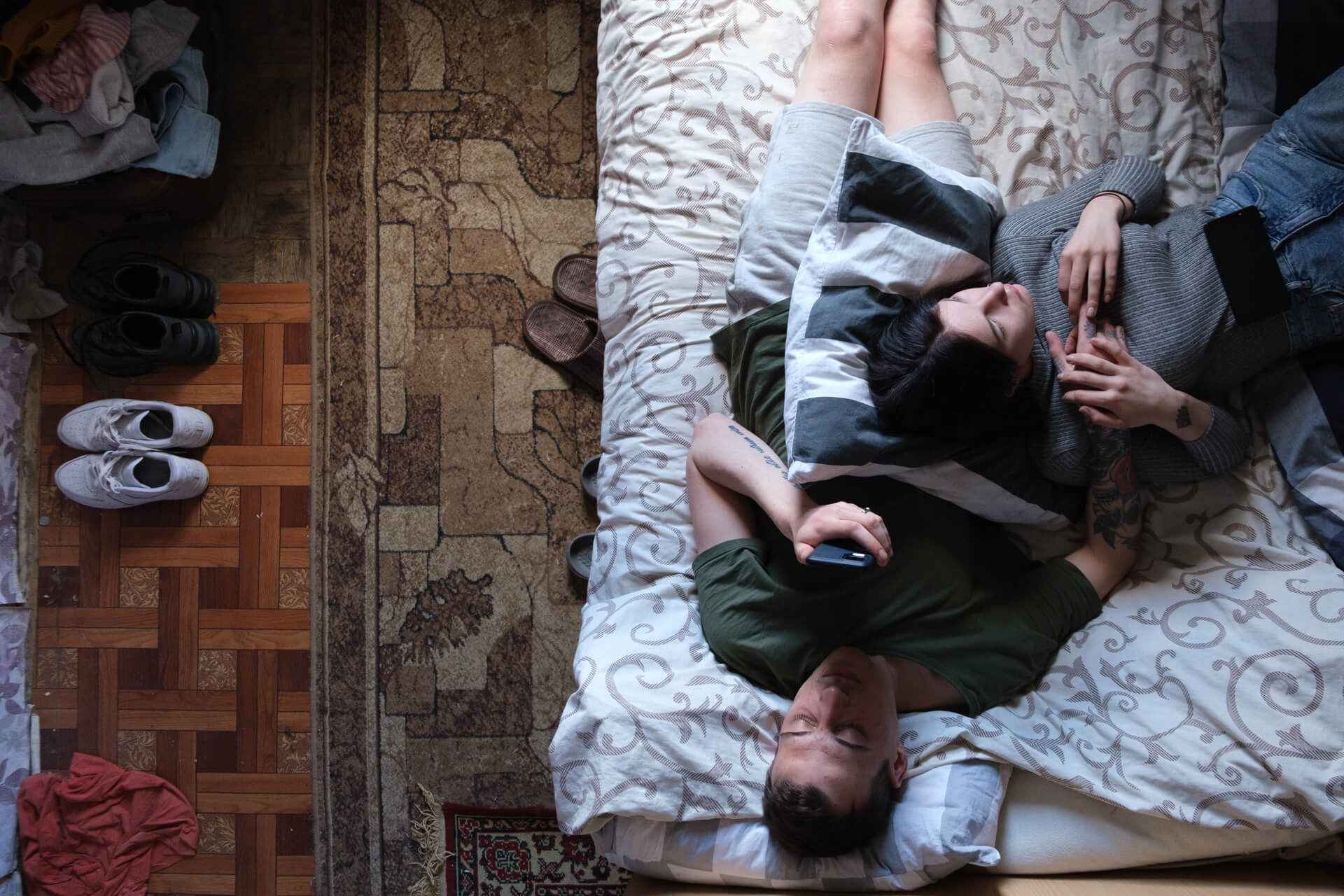
Nastia and Sasha have moved from Kharkiv not long before the full-scale invasion and they now live in a hostel in Lviv.
At first, I took pictures of my friends. Lviv hosted a lot of people from Kharkiv, so I would come by and spend some time with them, documenting their lives. Seeing your friends, who escaped shelling, is a ground-breaking experience. I ran into some of them accidentally on the streets; other times, our mutual friends told me that they were in the city.
After a while, I started taking pictures of friends of my friends or going to shelters where I knew no one. I used to come by every day and eventually I got to know many people there. I keep in touch with quite of few of them to this day. These people have totally different interests and backgrounds, and we would hardly be friends if not for the war that brought us together.
These people have totally different interests and backgrounds, and we would hardly be friends if not for the war that brought us together.
They are used to having cameras around and they pay no attention at me while I shoot. Before the invasion, I would have had to live with people for a while to achieve that but now things have changed. People simultaneously feel close to each other — united by mutual experience — and far away, deep in thought and grieving.
During the five months that I’ve been shooting the project, I heard many different stories. I met large families, whose houses were destroyed, students, who had to deal both with the war and their university exams, and even former prisoners.
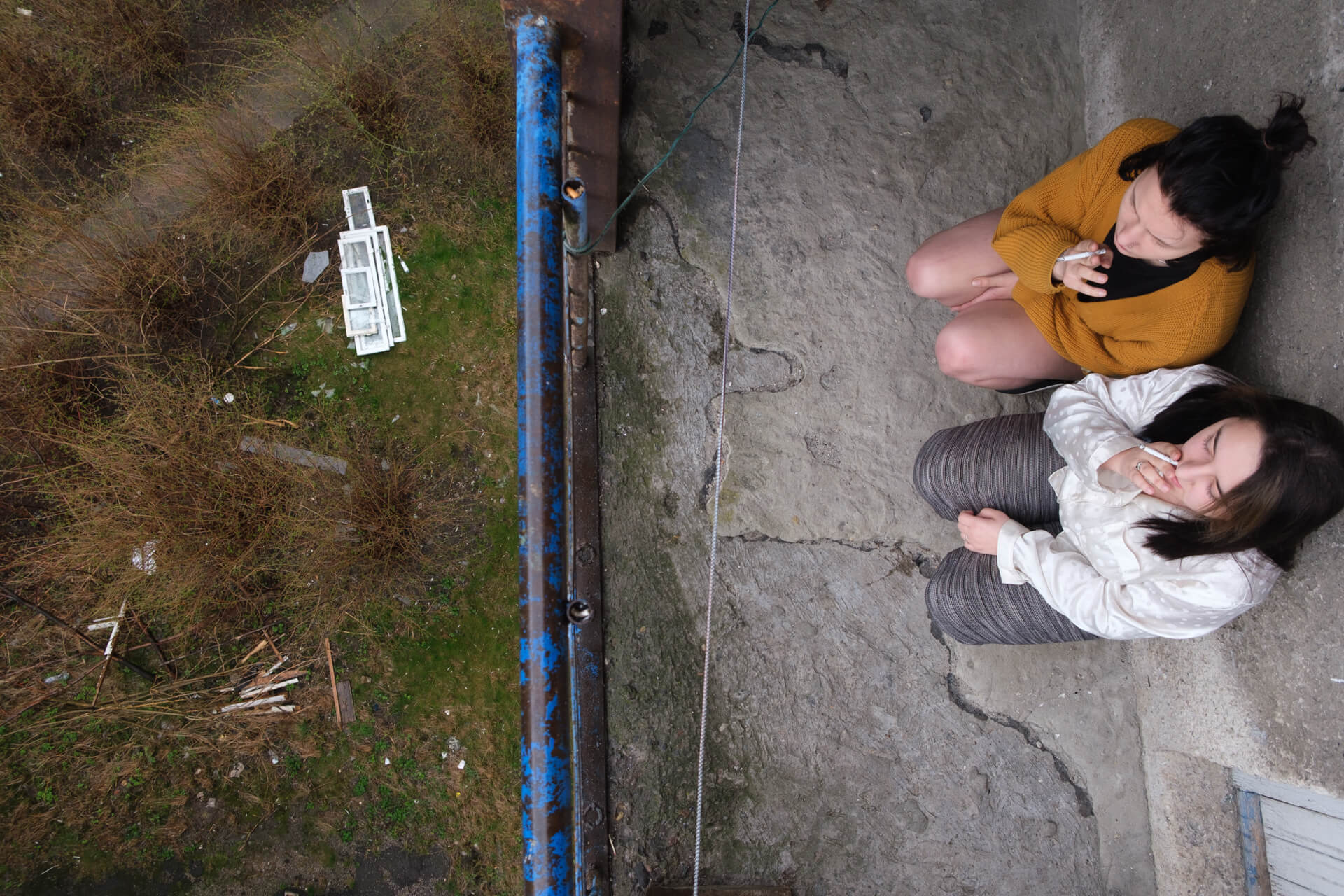
Lera and Nastia. They met at the hostel and became friends.
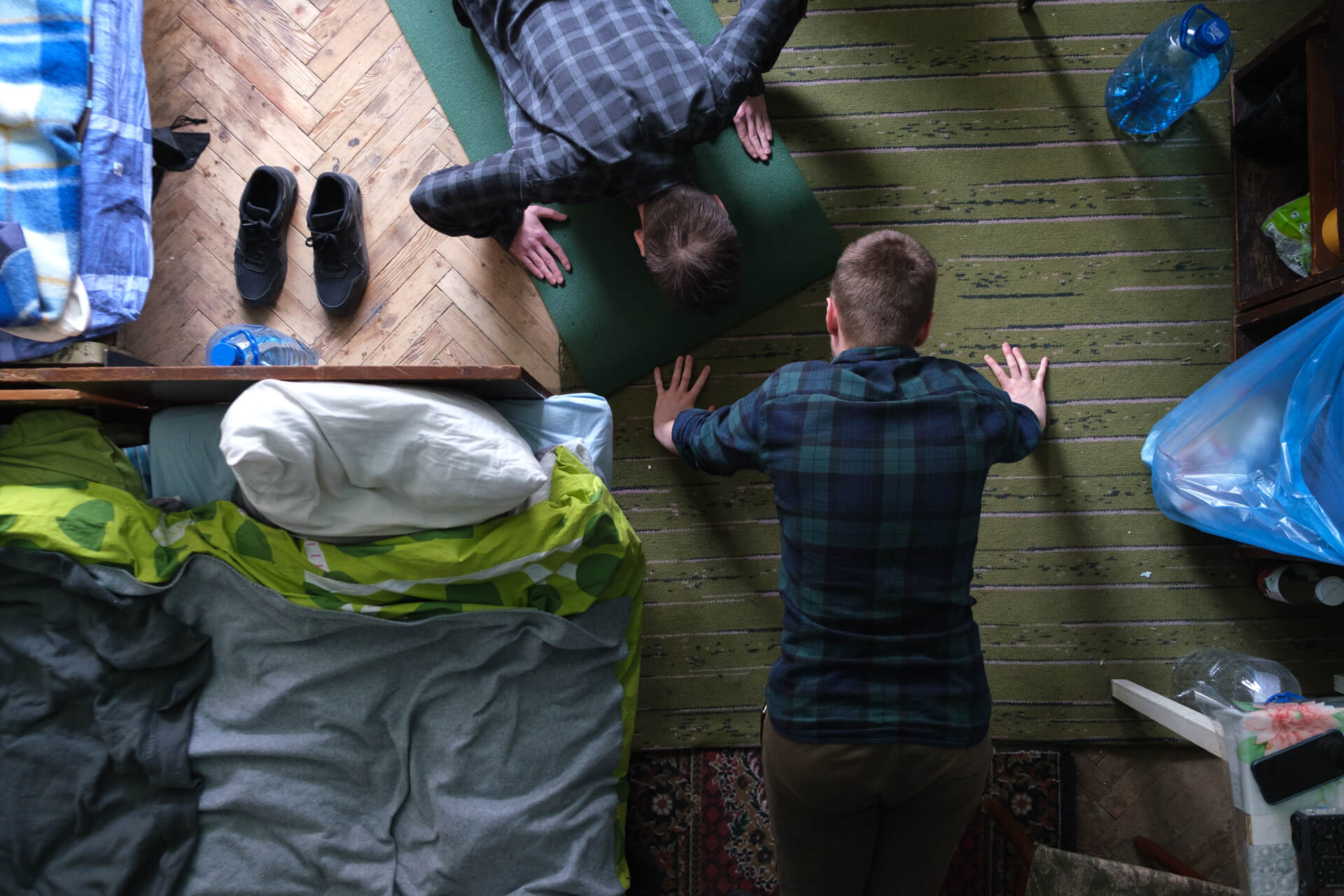
Kostia and Vania are exercising in their hostel room. They study film direction at one of the Kyiv universities. They moved to Lviv soon after the full-scale invasion.
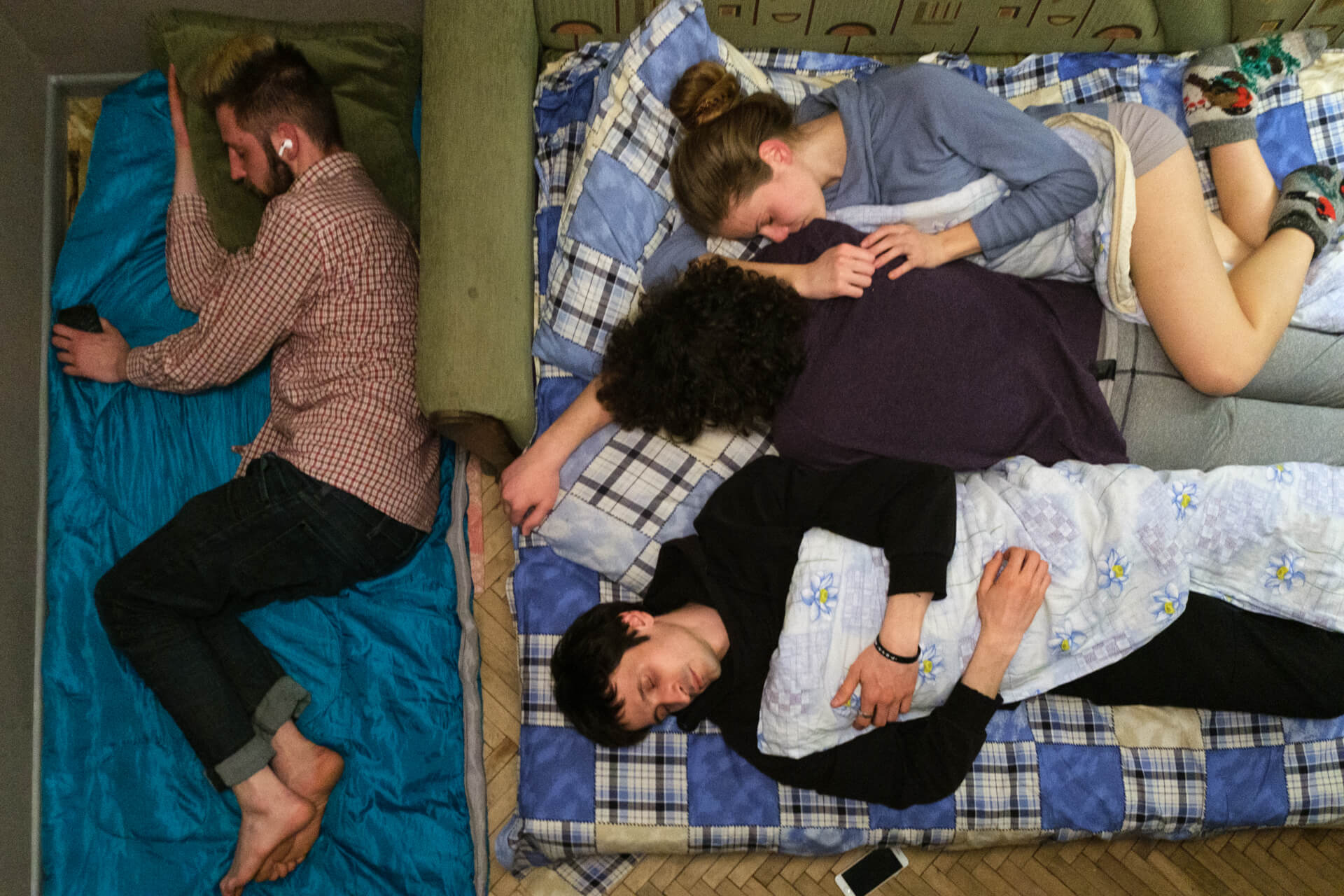
Mariia, Hlib, Ivan, and Denis. They came to Lviv from Kharkiv and they now live all together in a small room in their friend’s apartment.
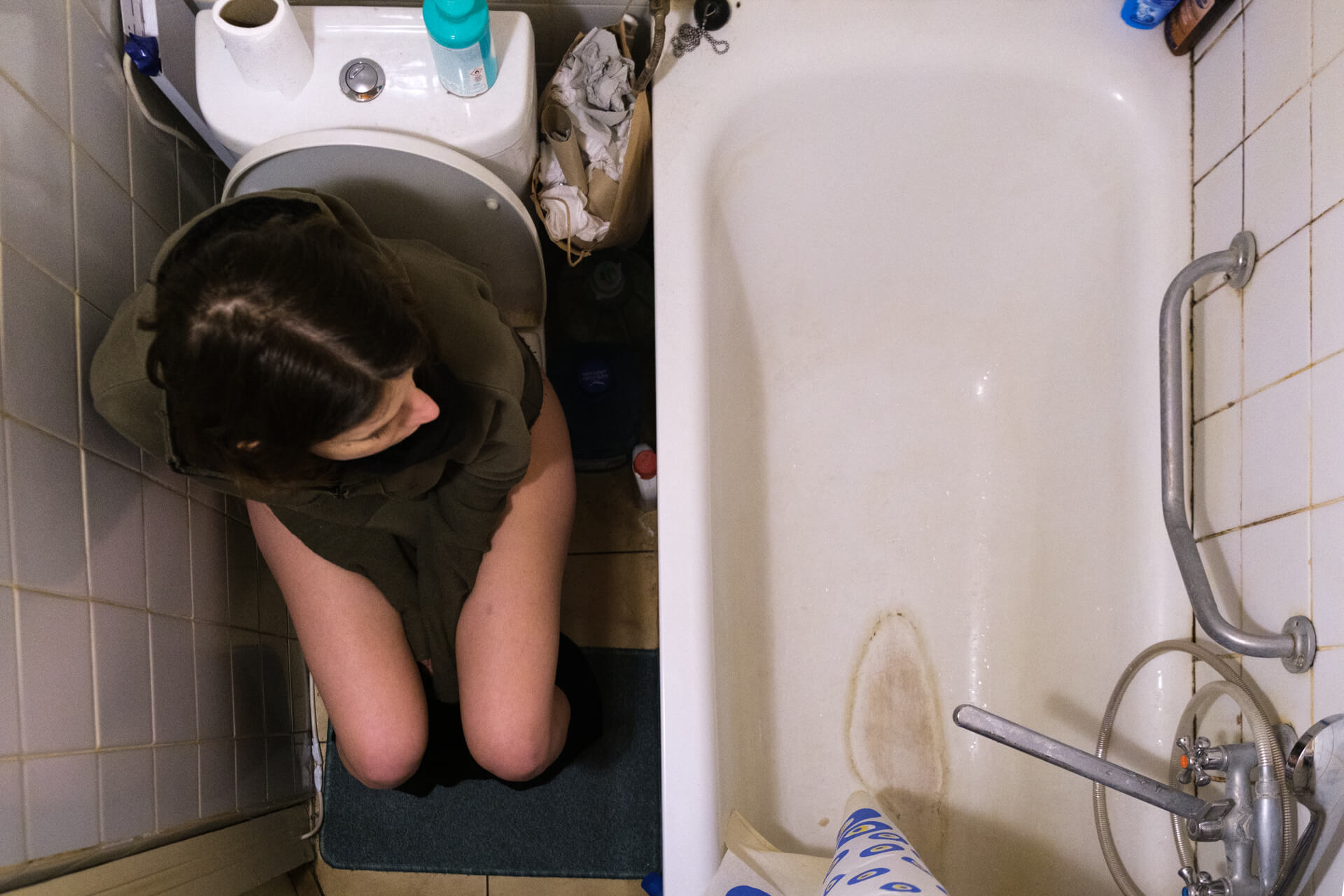
Nastia left home on the first day of the full-scale invasion and she now lives in a house for displaced people in Lviv.
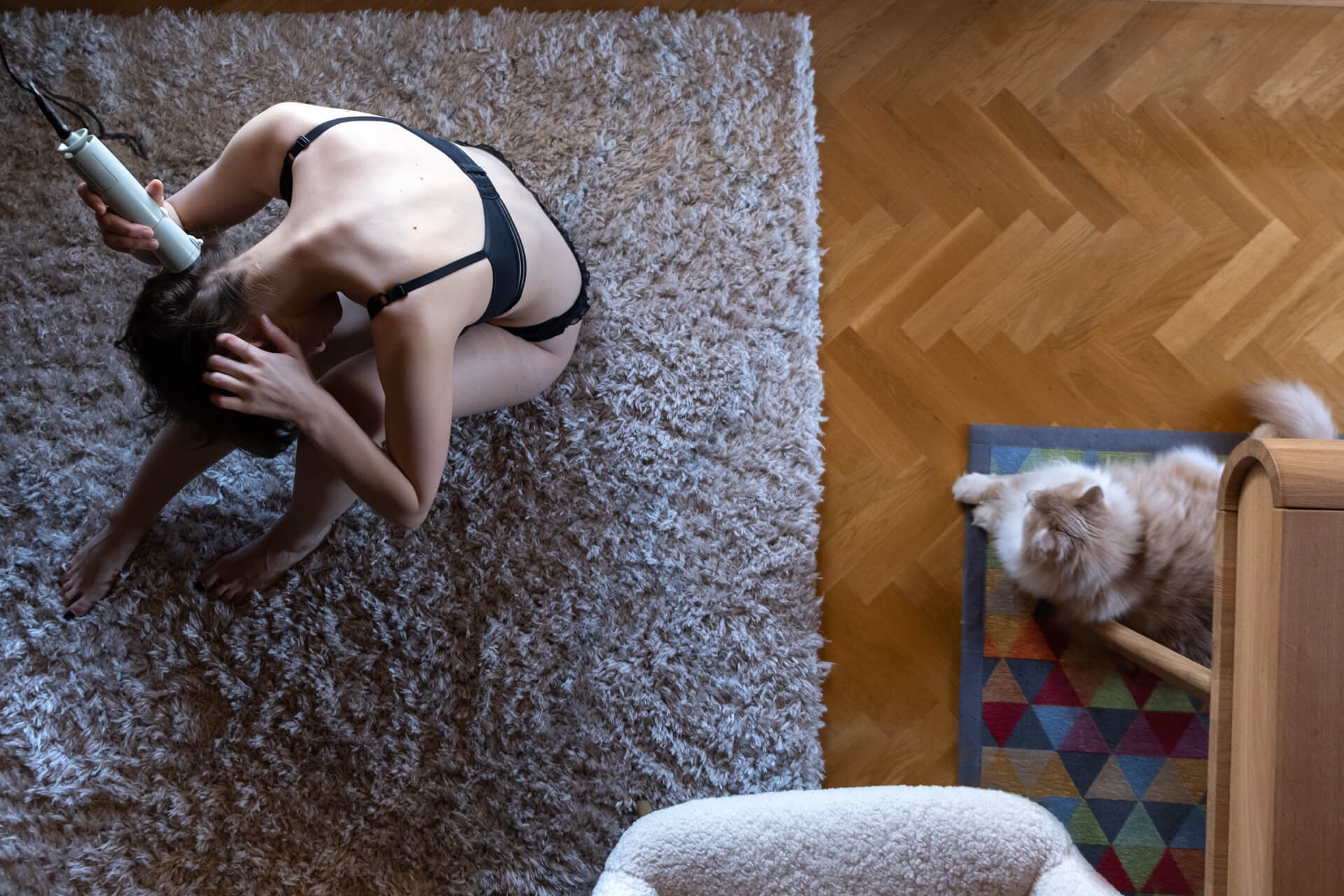
Nastia blow-dries her hair. She left home on the first day of the full-scale invasion and now she lives in a house for displaced people in Lviv.
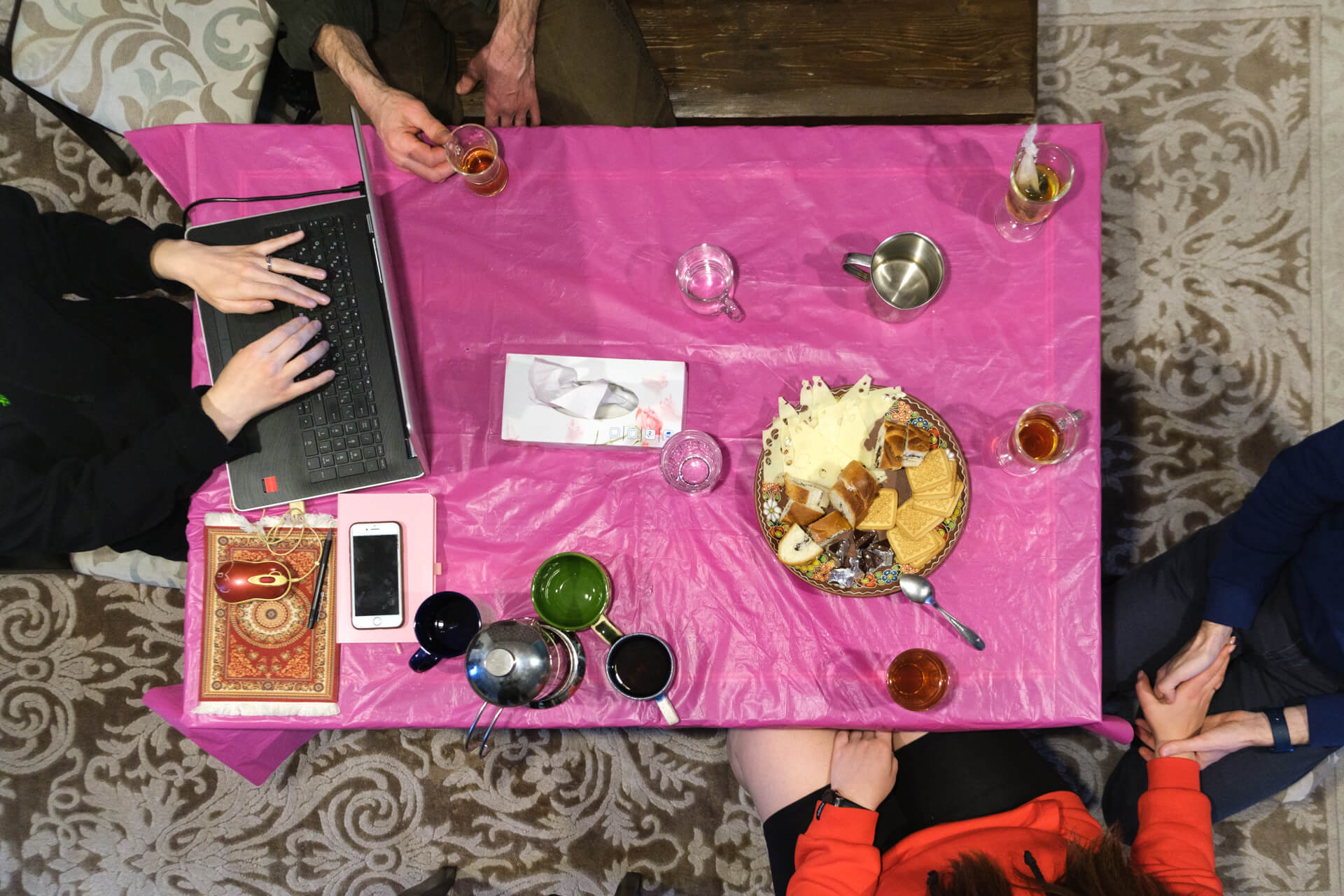
Lunch in a house for displaced people near Lviv.
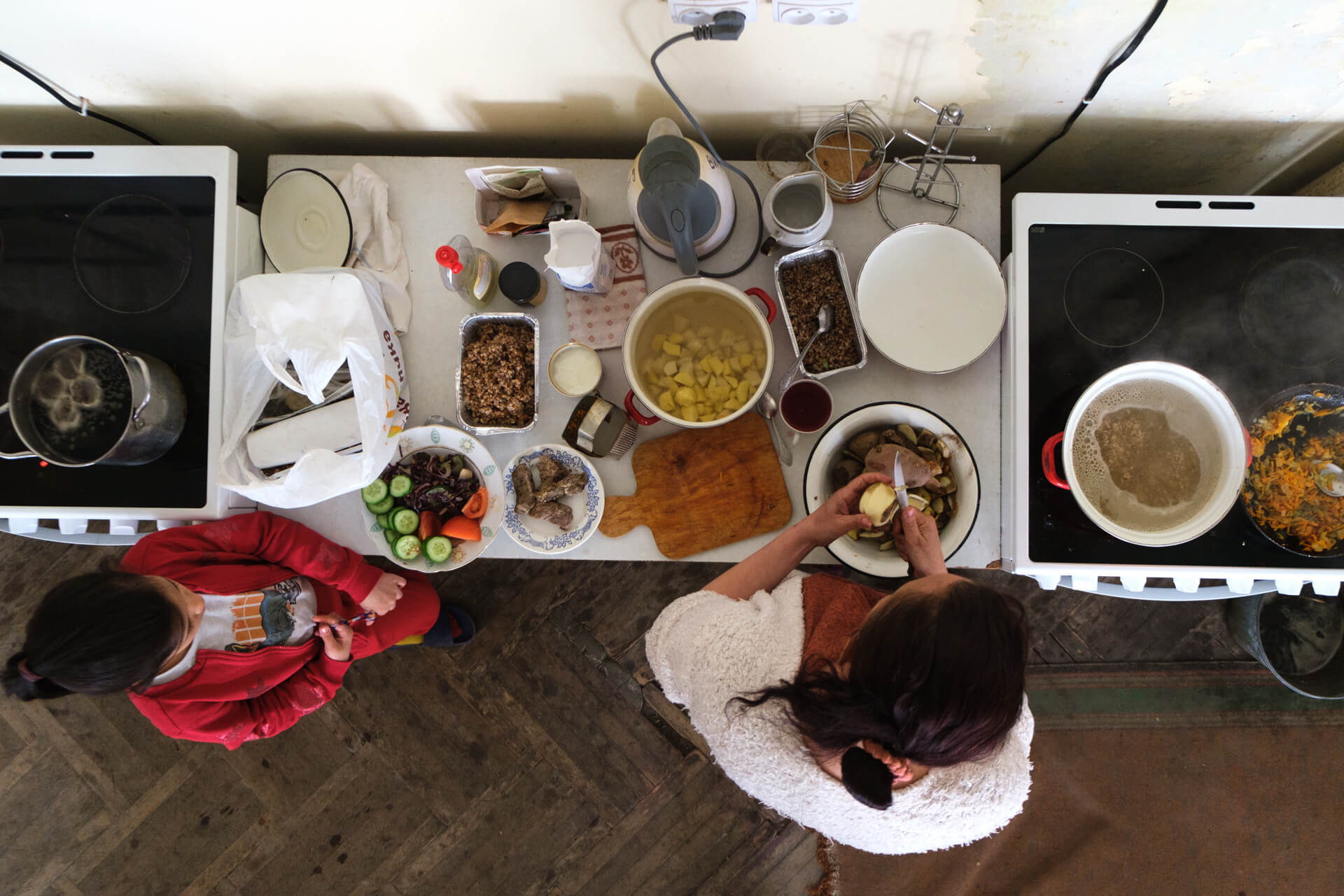
Tetiana and her daughter help cook lunch for people in the hostel, where the two of them live.
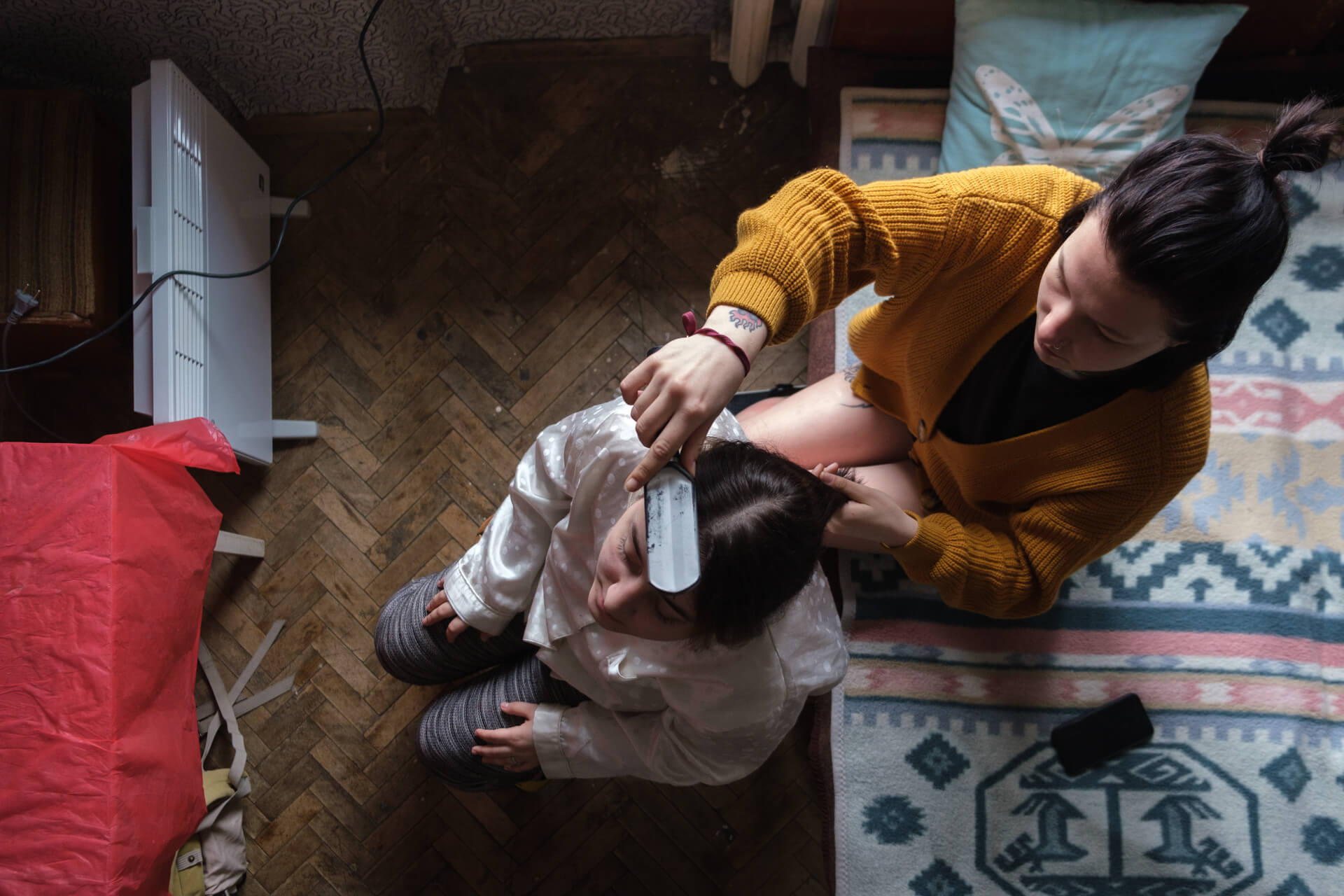
Nastia brushes Lera’s hair in a hostel room. They both came from Kharkiv and became friends in the Lviv hostel, where they now live.
I remember an evening that I spent in one of my first temporary homes. More and more people moved in there every day. There was a young family from Kharkiv, a theater actress Katia and her husband, a director, who played with their kids. The kids found toys in the house — soldiers, tanks, airplanes. One of the kids said: “And now you’ll be bombed!”. It sounded eerie, but his mom replied calmly: “No bombs for today, okay”.
One of the kids said: “And now you’ll be bombed!”. It sounded eerie, but his mom replied calmly: “No bombs for today, okay”.
I think that I already have enough material, but I keep taking pictures from time to time. Telling the stories of displaced people helps me to understand myself better. I would like to document how these people go back to their homes, but it might take a while.
Before the full-scale war, I was getting more and more interested in experiments with photography language, digital algorithms, and our perception of images. But now I’m taking a step back to the documentary. Telling the stories of people, whose life is altered by the war, seems like the most important thing to me. I have shot only one less documentary project on the first day of the full-scale invasion. It’s a continuation of the Obscure Land series but with a different context, in which I’m leaving my home.
I have a couple of projects, that I’ve done halfway. A lot of them are about displaced people because I feel that it’s my story too. I guess I need some time and space to reflect on all those things. But who has this opportunity now?

Anna cleans up her new flat in Lviv.
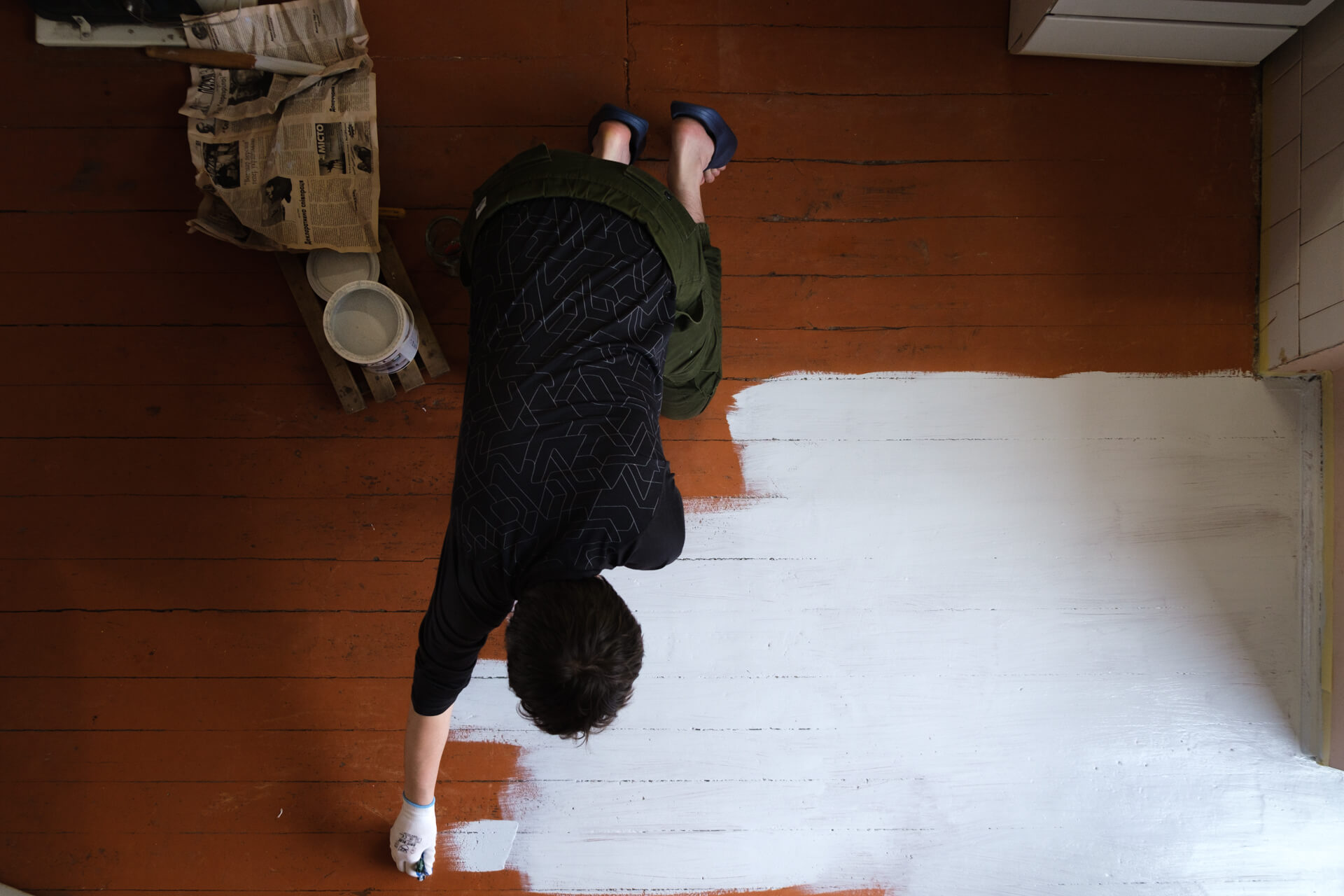
Yuri paints the floor in the apartment, to which he moved together with his girlfriend Anna and her brother. They spent the first two weeks in Kharkiv, then moved to Lviv. They used to live in a flat with other displaced people until the owner asked them to move out. Now they rent an apartment in Lviv.
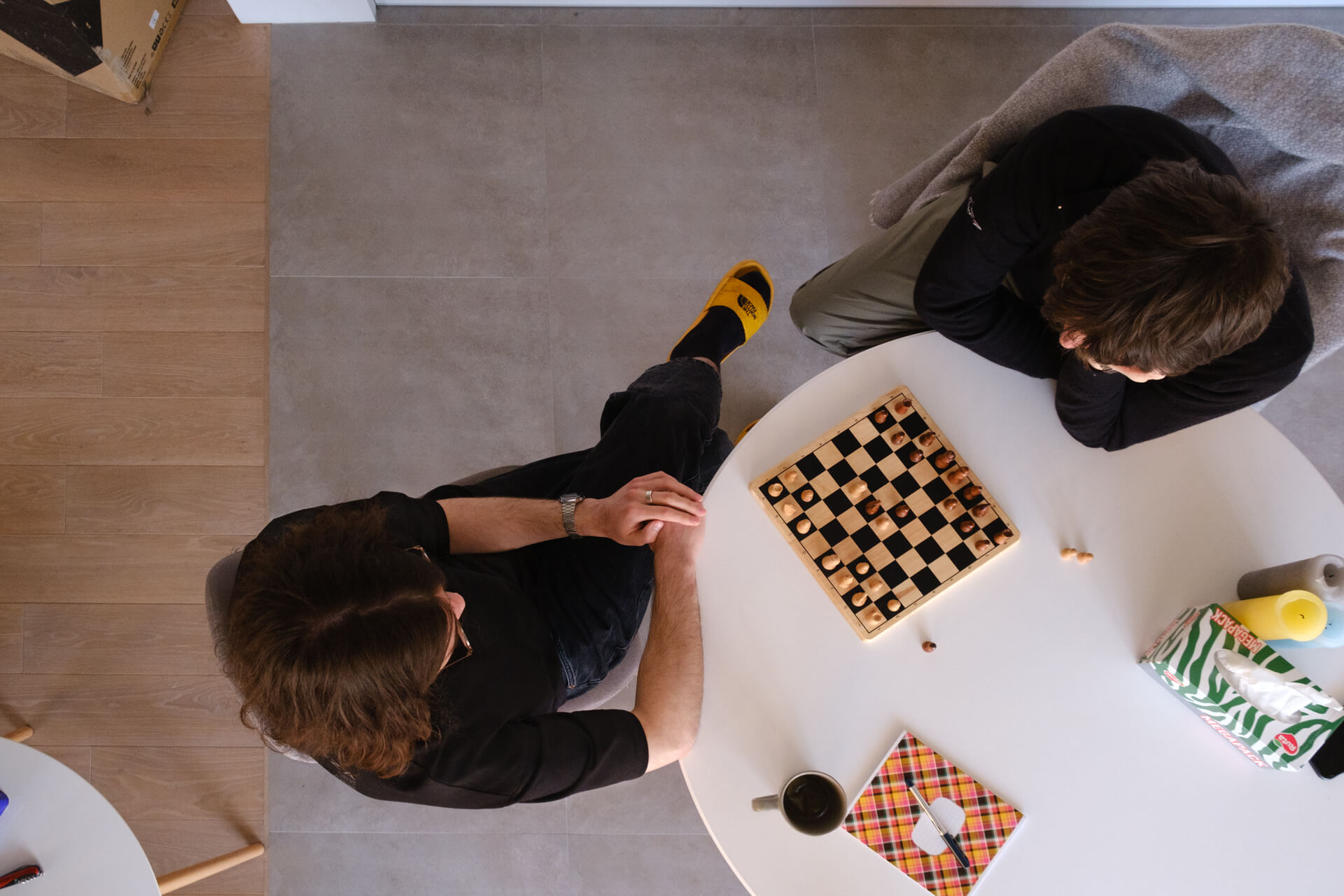
Arthur and Yuri play chess in the apartment, where they live with other displaced people.
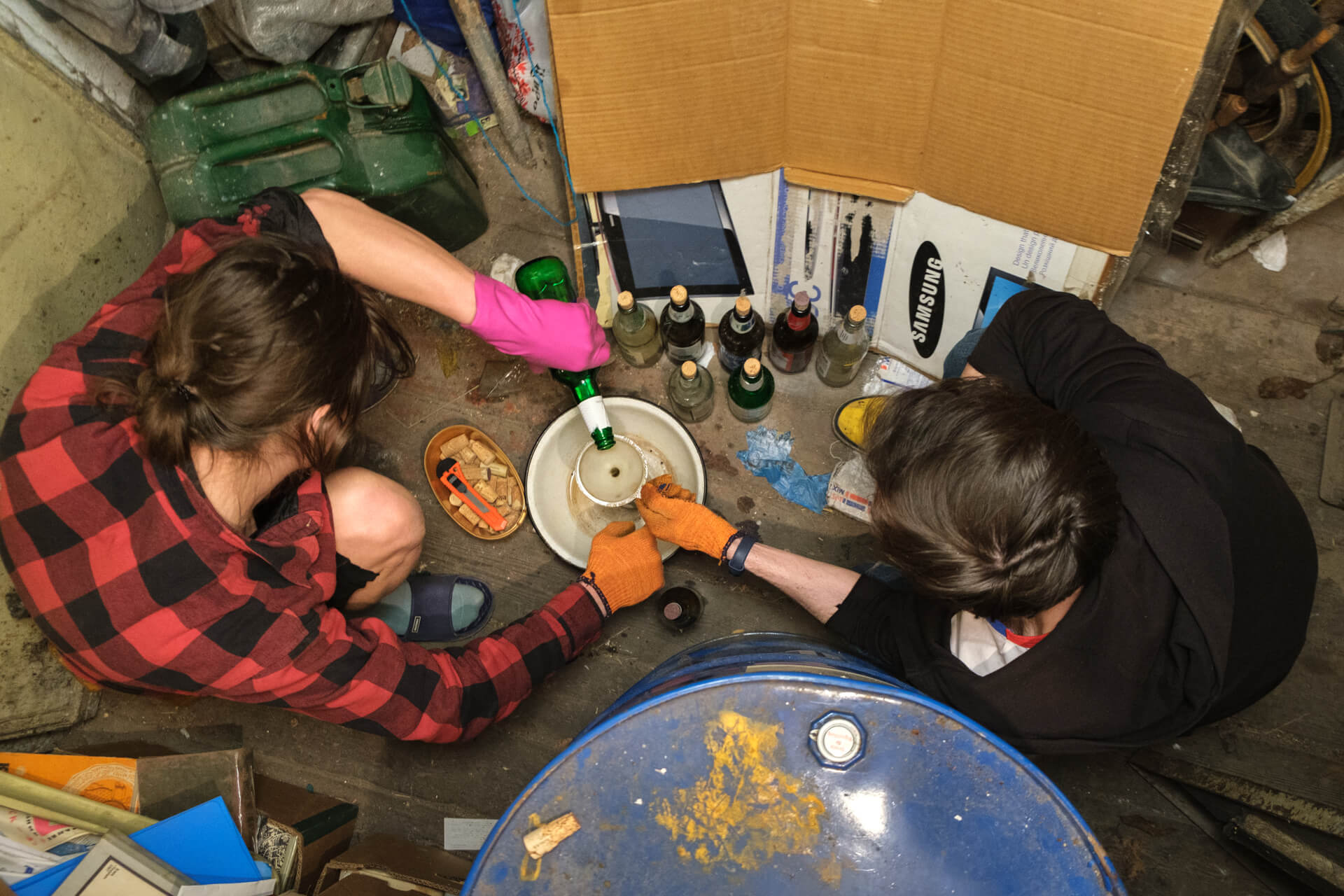
Sashko and Olexiy make Molotov cocktails in a shed near the house where they live.
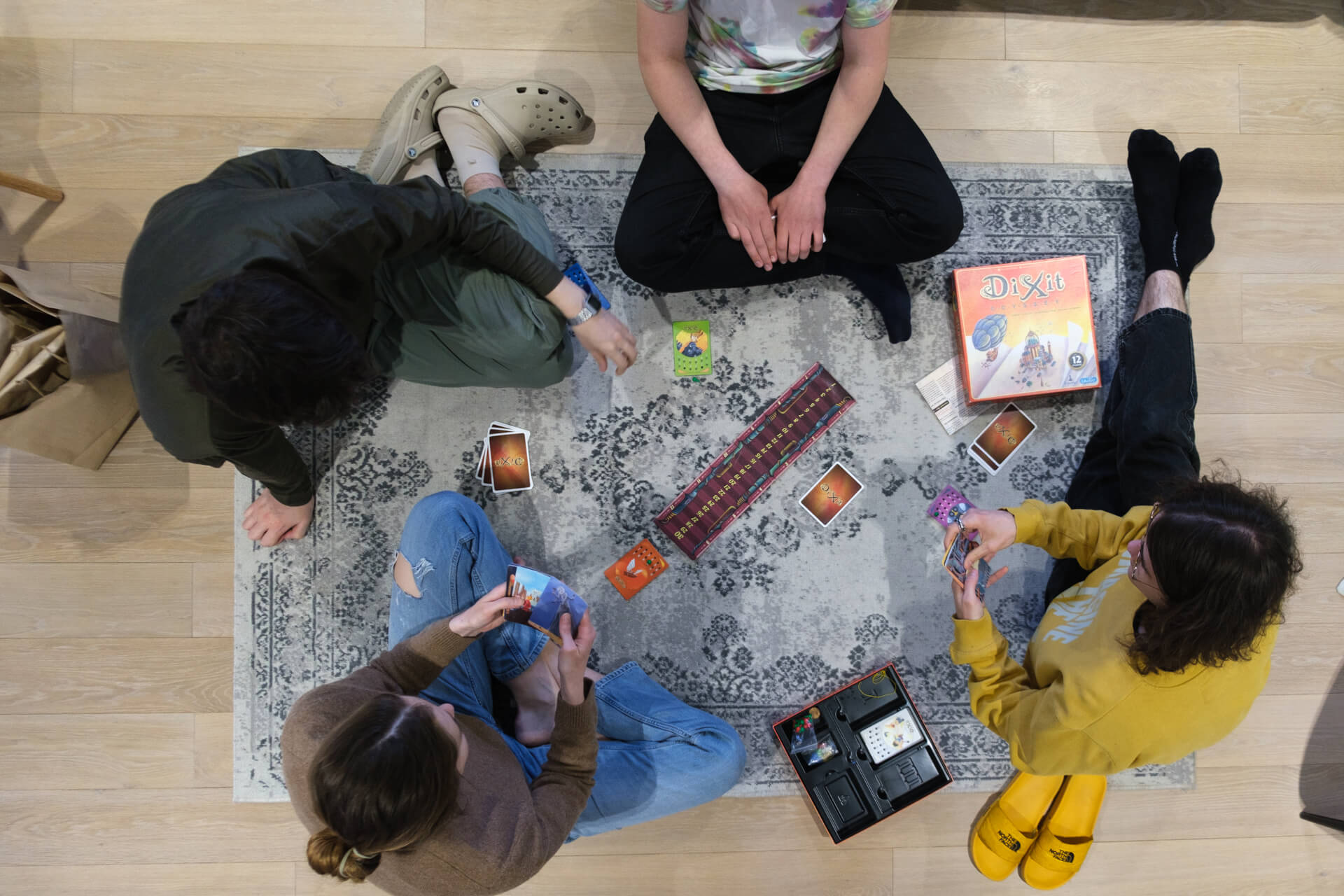
Nazar, Arthur, Ania, and Yuri play in a flat in Lviv, where they stay after the Russian invasion.
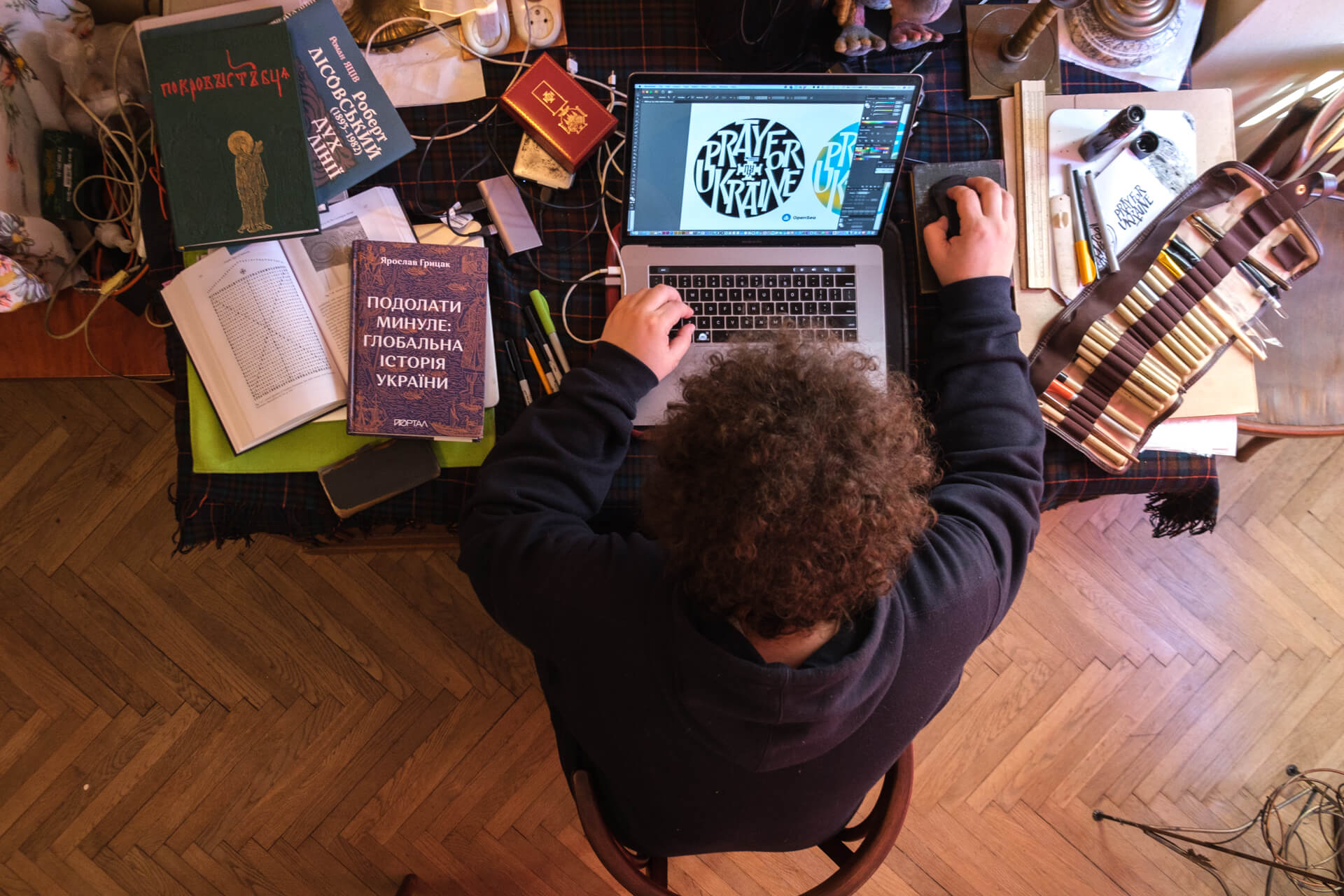
Olexiy Chekal, an artist from Kharkiv, works on a logo design for the Ukrainian church. He moved to Lviv with his two sons and wife.
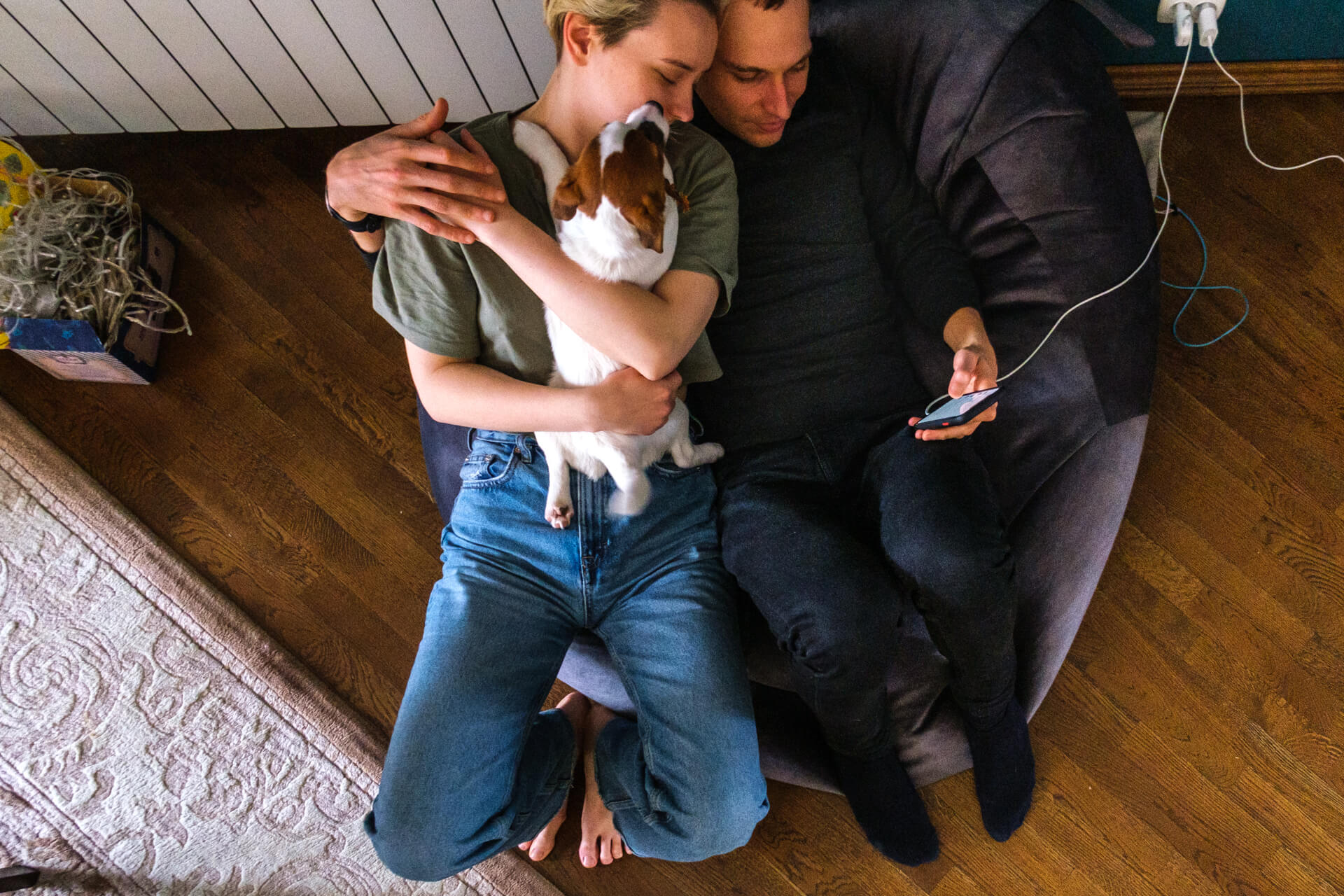
Olena and Sasha are in a house near Lviv, where they temporarily stay after leaving their homes. Before the full-scale invasion, Olena had planned to move in with Sasha in Kyiv. They spent the first six days separately in different cities and then decided to go to Western Ukraine. Now they live in a house for displaced people.
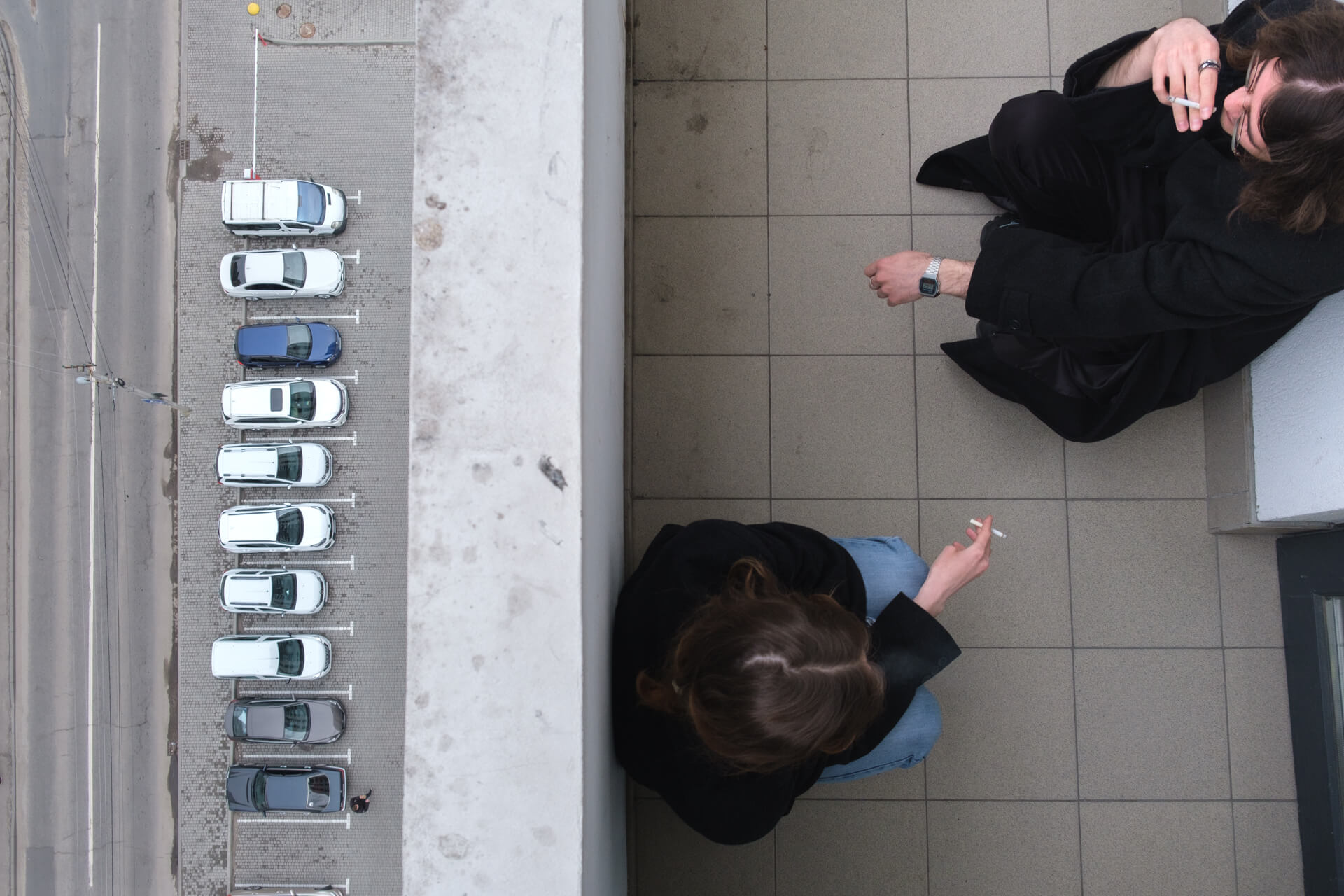
Anna and Arthur live in a flat with three other displaced people. They spent the first two weeks in a bomb shelter in Kharkiv, then they fled to Lviv.
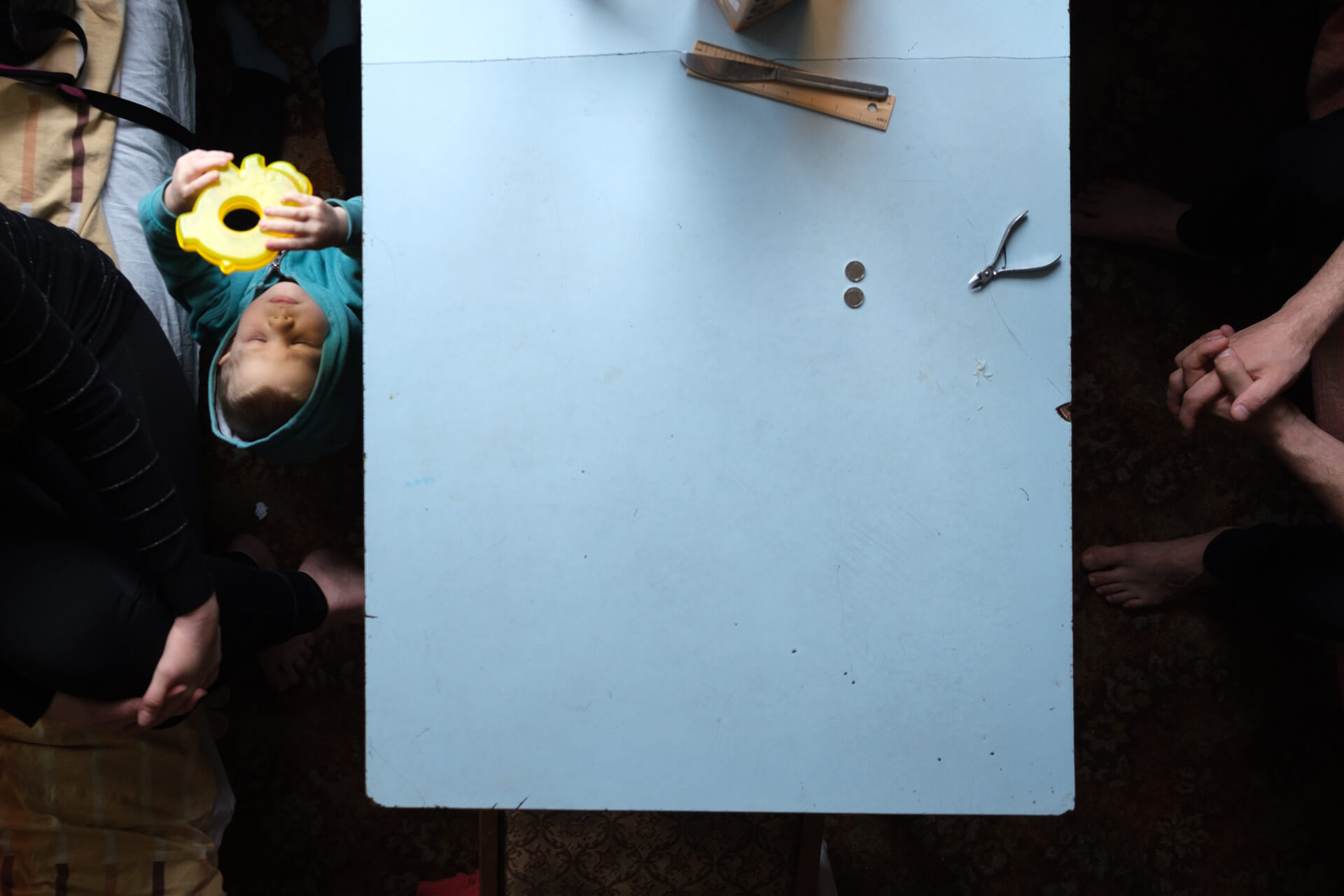
Klym (4 y.o.) with his parents, Olesia and Kostia. Olesia was diagnosed with cancer on March 18. Her family moved from Kharkiv to Lviv, looking for treatment. She now lives in a small hostel room together with her husband and four children.
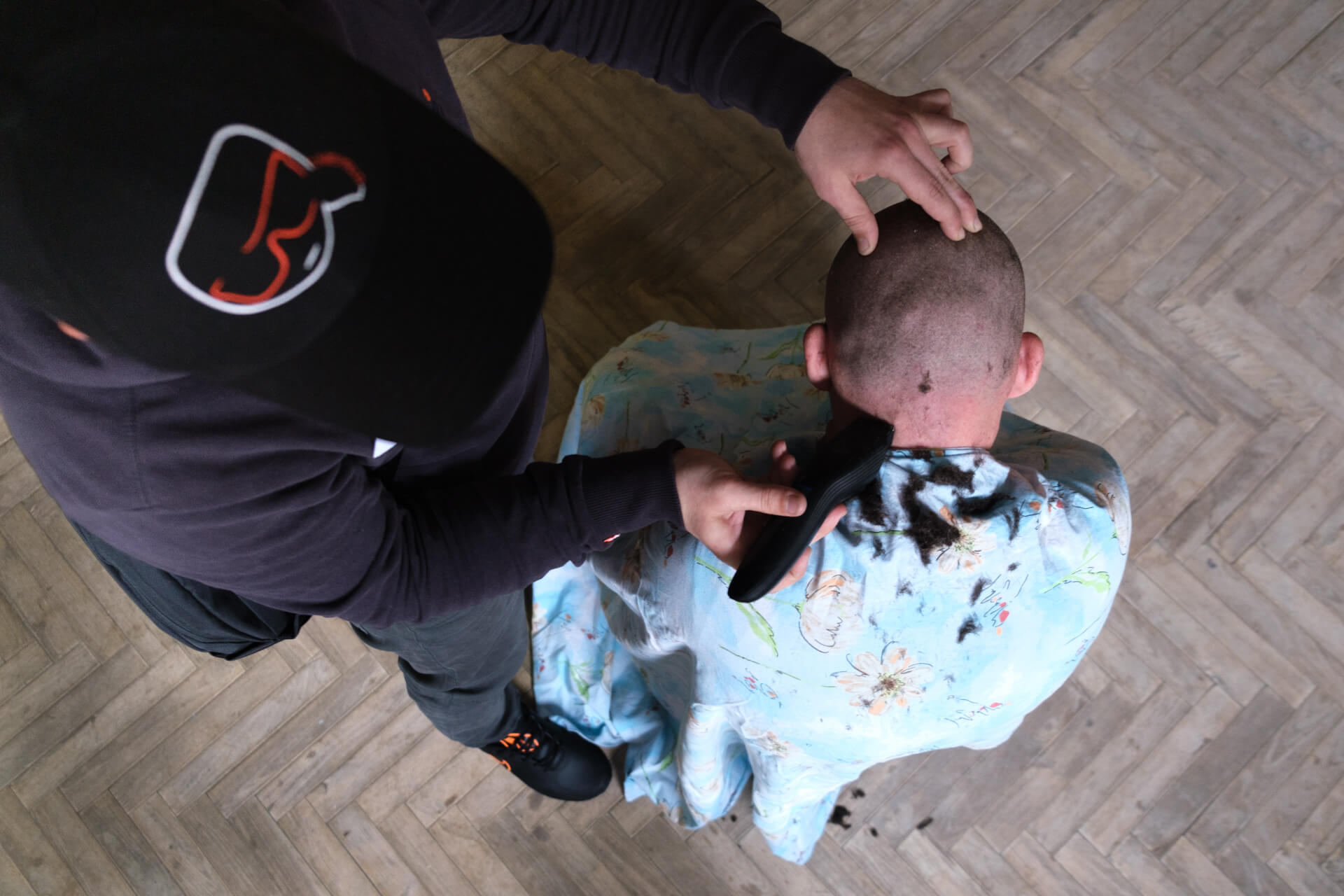
Serhiy cuts his hair in a hostel hallway. He lived in Kharkiv and planned to buy a flat there. Now he lives in Lviv and tries to get a job. He stays in a hostel for displaced people.

Anna cuts the Easter cake in a flat where she now lives with Yuri. They are from Kharkiv. They used to live with three other displaced people, but now they have found a separate apartment.
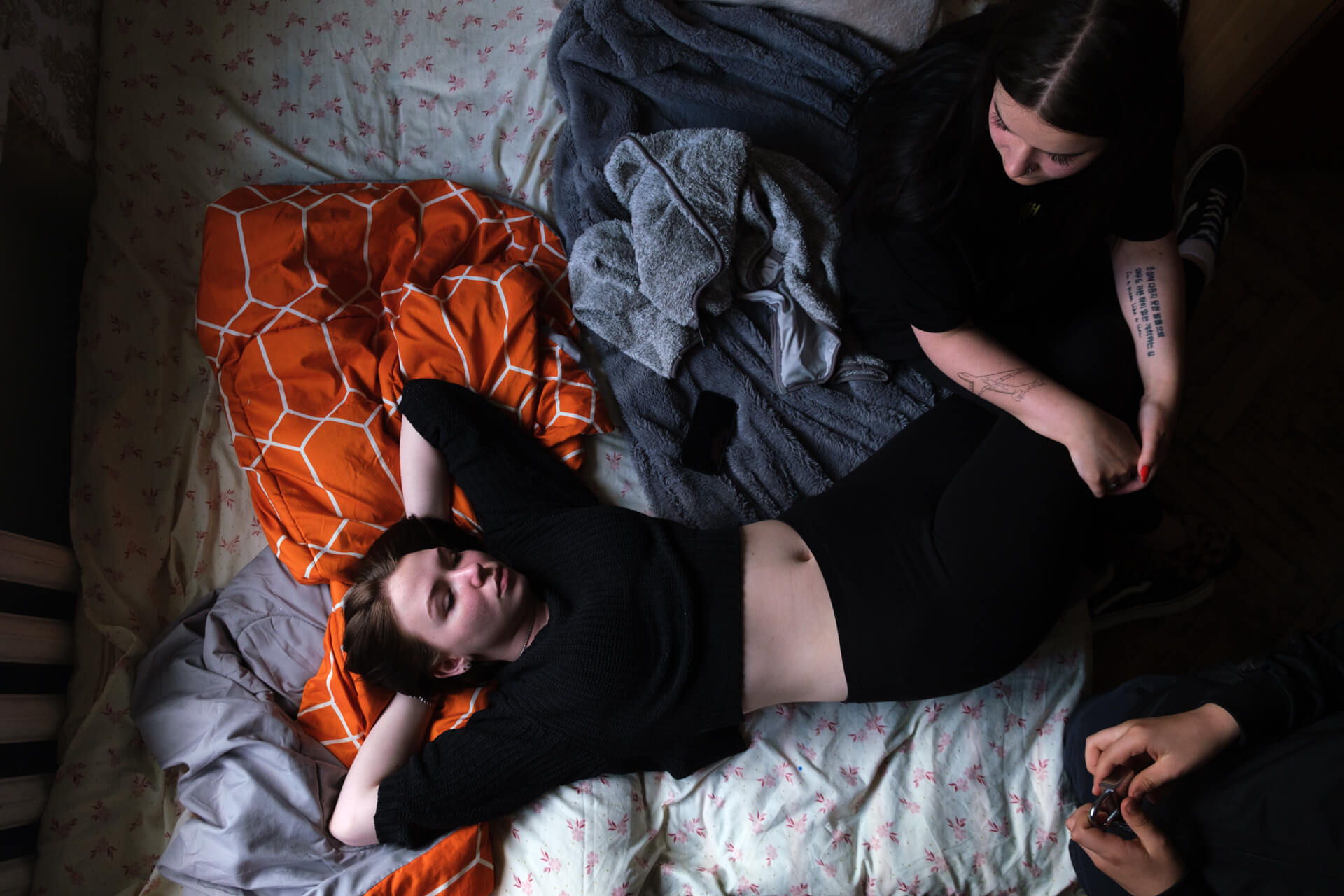
Lina and Sasha live in a hostel. They both came from Kharkiv and became friends. Before that, Lina lived in a room with her mother and two brothers. She misses Kharkiv so much that she goes back there from time to time disregarding the danger.

Lera gives Marina a pedicure in her hostel room for displaced people. Lera is from Kharkiv. She always liked to work with nails, and when the full-scale invasion began, she went to Lviv and started working as a manicurist in the hostel where she lives.
New and best
